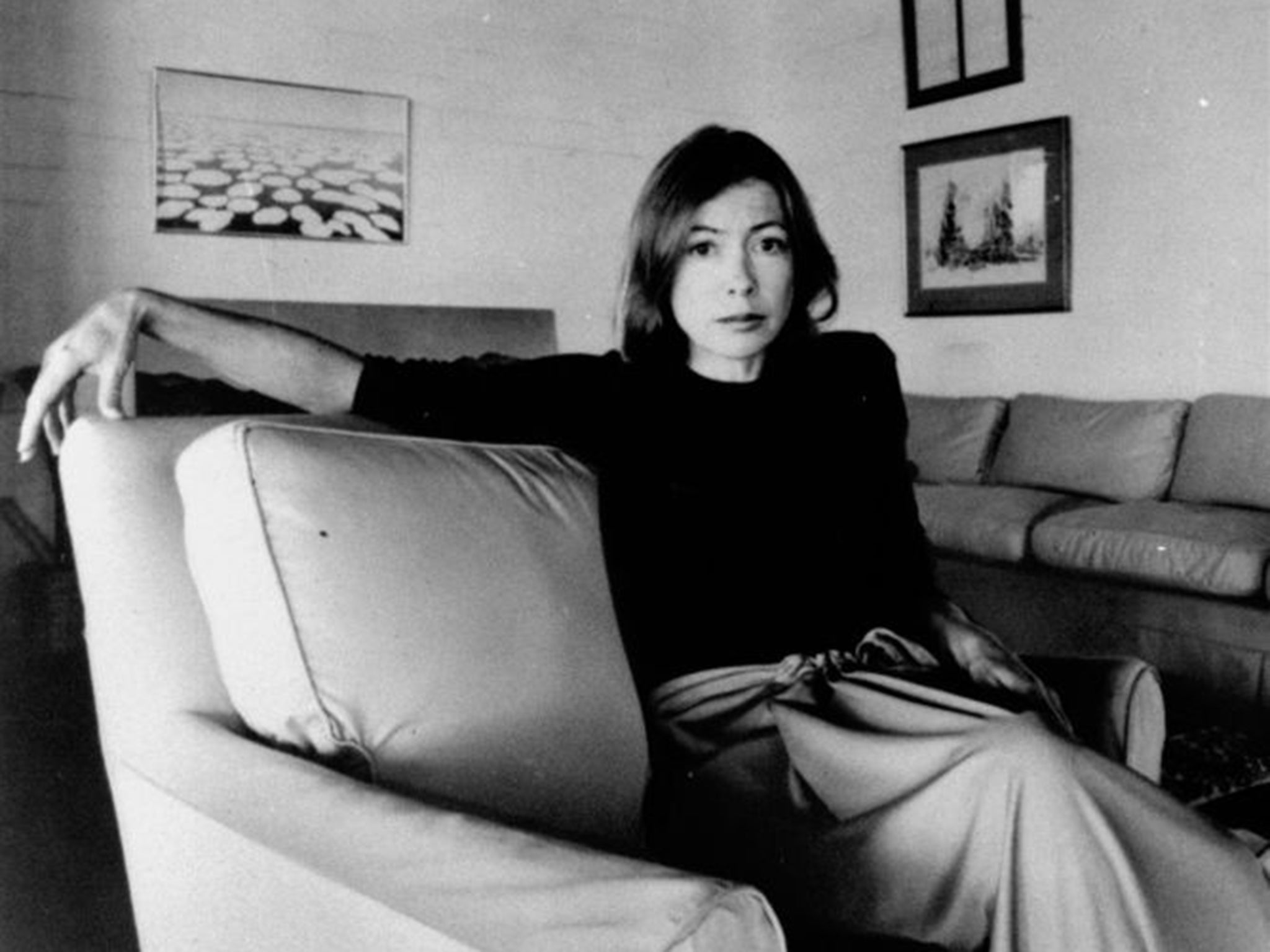Joan Didion’s ‘Let Me Tell You What I Mean’ is a bewitching blend of humility and disdain
Joan Didion was ahead of her time, and her feeling for the uncanny has always sparkled in her essays. It is as clear as ever in this new collection, writes Charles Arrowsmith

Joan Didion has been consecrated in her own lifetime. In the five decades since Slouching Towards Bethlehem, her work, particularly her non-fiction, has been widely celebrated. In 2013, President Barack Obama awarded her the National Humanities Medal. She was the subject, in 2017, of a Netflix documentary, The Center Will Not Hold. South and West, published the same year, showed that even her notes would sell. This April, the Library of America will release the second volume of its definitive edition of her work. What has fixed her in the collective imagination?
Partly the chilled prose – ahead of its time, anticipating both the personal essay boom and the numbed affect that would become typical of Generation X. But also her extraordinary insight. Nathaniel Rich, prefacing South and West, wrote that she “saw her era more clearly than anyone else, which is another way of saying that she was able to see the future”. Hilton Als, in his introduction to her slim new volume Let Me Tell You What I Mean, suggests that it's Didion’s “feeling for the uncanny” that distinguishes her contribution to American non-fiction.
Reading many of the essays freshly anthologised here, it's hard to argue with these sentiments. The clarity of Didion's vision and the precision with which she sets it down do indeed feel uncanny. Her writing has often revealed what was previously hidden, or parsed what was unconscious, whether in regard to the miasmic unease of the late 1960s or the subterranean structures of national politics. Reading her now, she does seem prophetic, as manifested, for instance, in her concerns in 1968 about the weaknesses of the “traditional press”, whose unspoken attitudes and “quite factitious ‘objectivity’” come “between the page and the reader like so much marsh gas”. Perhaps those iconic sunglasses were really X-ray specs.
Let Me Tell You What I Mean collects 12 pieces written between 1968 and 2000. These include half a dozen columns for The Saturday Evening Post alongside essays on subjects ranging from Robert Mapplethorpe and Ernest Hemingway to Hearst Castle and “Why I Write” (“entirely to find out what I'm thinking, what I'm looking at, what I see and what it means. What I want and what I fear”).
The bad news first: You'll want more. The Saturday Evening Post articles are bite-size, trailers rather than the whole movie, and some later articles have been conspicuously overtaken by the passage of time – an essay on Martha Stewart in The New Yorker, for instance, written four years before her prison time. Meanwhile, the absence of anything post-2000 is cause for regret. Oh, for Didion's take on the Obama years; the alt-right; the Trump presidency. (Notwithstanding her nephew Griffin Dunne's suggestion that she's bored by Trump – “He doesn't have any subtext.”)
Still, admirers have much to celebrate. There are wicked reminders, for instance, of her acid humour. In an account of a Gamblers Anonymous meeting, she observes, “I had not heard so many revelations of a certain kind since I used to fall into conversations on Greyhound buses under the misapprehension that it was a good way to learn about life.” In “Pretty Nancy”, a swipe at then-Governor Ronald Reagan’s wife, a taciturn, almost Beckettian exchange between Nancy and her 10-year-old son is gleefully transcribed by a Didion waiting to pounce on “a woman who seems to be playing out some middle-class American woman’s daydream, circa 1948.”
Her distinctive rhythms, her ability to distil the essence of a thing: these are refined pleasures indeed. Writing about the evolution of that immaculate style in “Telling Stories”, she recalls her time writing captions for Vogue: “We were connoisseurs of synonyms. We were collectors of verbs ... Less was more, smooth was better, and absolute precision essential to the monthly grand illusion. Going to work forVogue was, in the late 1950s, not unlike training with the Rockettes.”
Perhaps Didion's flair for pithy summary derives from these editing drills at Vogue. Often her articles end with a grace note of quiet devastation, a cogent detail or observation that brings her subject into focus. Attending a reunion of the 101st Airborne Association at the height of the Vietnam War, she catches a wistful father recalling his European experiences in an earlier war. “‘I got to see Paris, Berlin, got to see places I'd heard about but never dreamed I'd see. Now I've got a boy, well, in four years maybe he'll have to go.’ Walter Davis broke open a roll, buttered it carefully, and put it down again, untouched. ‘I see it a little differently now,’ he said.”
Didion once wrote that her advantage as a reporter is that “people tend to forget that my presence runs counter to their best interests”. This is also an incalculable advantage to her readers. Her bewitching blend of humility and disdain and her unsentimental yet compassionate eye are welcome tonics for frenzied times.
‘Let Me Tell You What I Mean’ by Joan Didion. Knopf, HarperCollins, £12.99
© The Washington Post
Subscribe to Independent Premium to bookmark this article
Want to bookmark your favourite articles and stories to read or reference later? Start your Independent Premium subscription today.

Join our commenting forum
Join thought-provoking conversations, follow other Independent readers and see their replies